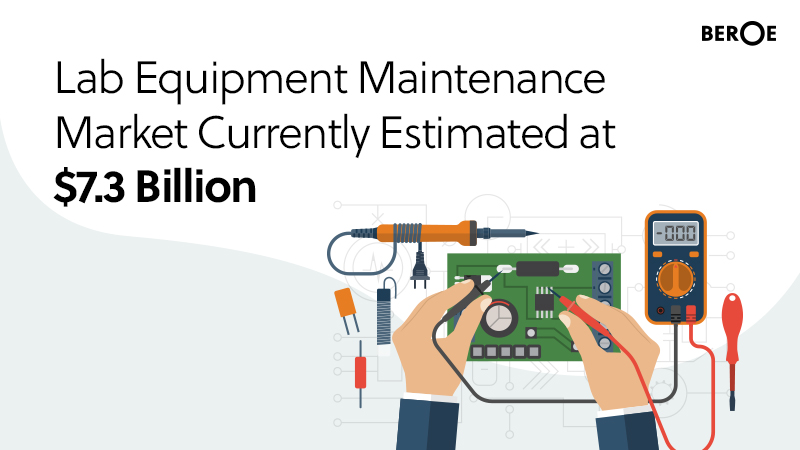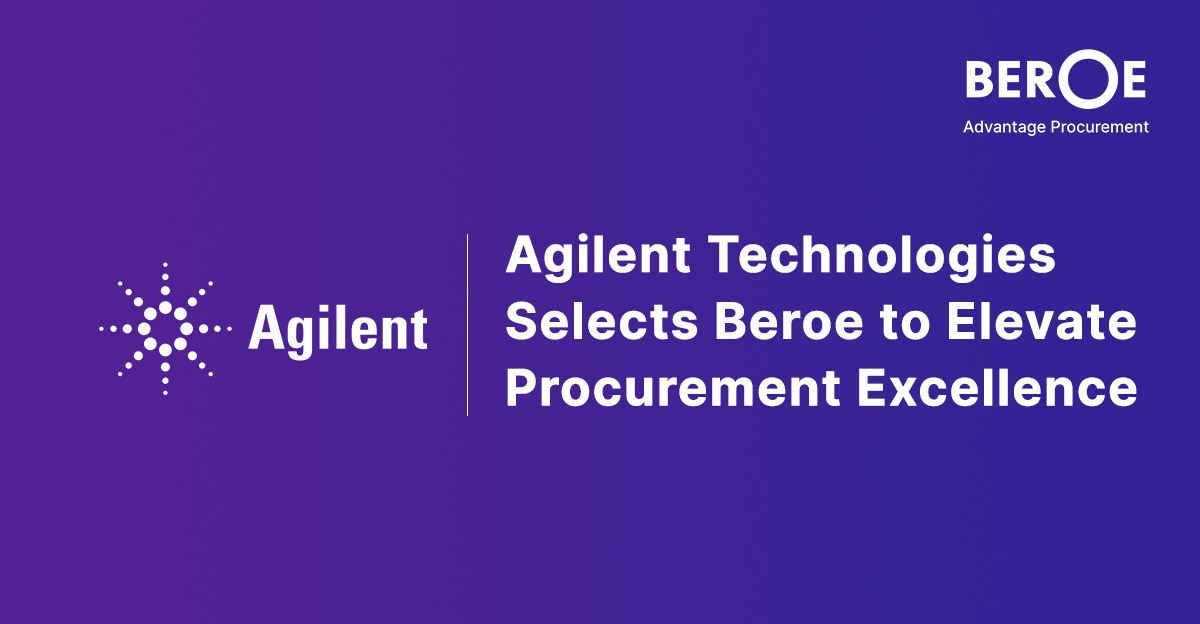Lab Equipment Maintenance Market Currently Estimated at $7.3 Billion, Says Beroe Inc
Source: PR Newswire

RALEIGH, North Carolina, October 9, 2019 - The global market for lab equipment maintenance is currently growing at a CAGR of 5–6%, according to Beroe Inc., a procurement intelligence firm. Increasing budgetary and cost-saving pressures, along with advancements in maintenance technology, and emphasis on good laboratory practices are driving the growth of the market.
Governments across North America and Europe have not increased Funds/grants for lab equipment maintenance as per expectations in the past five years and research organizations are also becoming less intended towards buying new lab equipment. Emerging countries are popular grounds for clinical trials and local authorities are stressing on good laboratory practices, including Standard Operating Procedures (SOPs) on the operation, calibration, and maintenance of equipment. In developed countries, regulatory authorities are more focused on data security, traceability, and integrity of electronic records.
Beroe, which is based in North Carolina, further stated that procurement experts can access this report on its recently launched market intelligence platform Beroe LiVE: live.beroeinc.com
Demands for lab equipment maintenance are present from multiple industries including pharmaceuticals, biotechnology, food and beverage, and chemicals. Mature buyers from the pharma/biotech industry prefer the MVS model, while buyers from the food and beverage industry prefer to have a strong internal maintenance team along with OEMs support. In a competitive financial environment, pharmaceutical companies are focusing on laboratory sustainability. Apposite lab asset management could increase laboratory efficiency and bring opportunities for soft cost savings. Lab equipment requires sophisticated and regularized maintenance.
Maintenance cost for high-end equipment such as mass spectrometer and automation is high, at around 20% of their total cost of ownership. Meanwhile, the maintenance cost for low-end equipment such as cell-based research and material characterization equipment is lower, at around 10% of their total cost of ownership. Buyers are recommended to engage with OEMs for high-end equipment as they have the required experience and technical expertise. Third-party service providers are recommended to maintain low-end equipment, as they only require calibration and minor corrective maintenance over a period.
Key Findings:
- Lab equipment maintenance suppliers offer services such as asset management, asset management software maintenance, calibration, inventory management, washing, mailroom services, and maintenance of lab chemicals.
- Technological advancements have made an impact on the market with the use of IT tools enabling proper tracking of laboratory inventory and equipment. Maintenance programs can also be scheduled to increase the uptime of the equipment.
- MVS providers prefer to target for at least 1,500 hours of maintenance work at a laboratory site to deploy on-site engineers. The typical utilization rate for an on-site engineer is around 80%, compounding to around 1,600–1,700 hours of maintenance work.
- The most popular sourcing strategy for laboratory maintenance services is regional/site-wise with a typical contract duration of 3–5 years which can then be extended based on the performance during the contract term.
- Most popular suppliers in the market are Unity Lab Services (Thermo Fisher Scientific), CrossLab Services, (Agilent Technologies), OneSource (PerkinElmer), GE Healthcare, and VWRCATALYST (VWR).
The research methodology adopted for the report included:
- Experts with twenty years of domain experience
- Interaction with buyers
- Inputs from supply chain partners
Most of the large pharma companies (top 20) spend around $4–8 million per site on MVS programs, while total program cost could be in the range of $10–30 million per annum. MVS providers are likely to provide best-in-class quality services at cost-effective pricing. Primarily, CROs are keeping strong internal teams for maintenance and asset management teams because their revenue depends on the number of samples tested, which is directly dependent on the uptime of the equipment.
The report also includes:
Market Analysis:
- Market Landscape
- Equipment Maintenance Market
- Lab Equipment Maintenance Demand
- Lab Equipment Maintenance by Equipment
Sourcing Landscape:
- Lab Equipment Maintenance: Multi-Vendor Service
- Sourcing Best Practices
Sourcing Case Studies:
- Best Practice Solution Roadmap
- Case Study: A mid-sized Pharma
- Case Study: Boehringer Ingelheim Success with MVS Model
Supplier Landscape:
- MVS Service Providers
About Beroe Inc.:
Beroe is the world's leading provider of procurement intelligence and supplier compliance solutions. We provide critical market information and analysis that enables companies to make smart sourcing decisions—leading to lower costs, greater profits and reduced risk. Beroe has been providing these services for more than 13 years and currently works with more than 10,000 companies worldwide, including 400 of the Fortune 500 companies.
Media Contact:
Rob McMurtrie
rob.mcmurtrie@beroe-inc.com
Related News
View all
Beroe introduces on-demand geopolitical risk analysis through PRISM enabling C-Suite to protect against ongoing supply chain disruptions

Beroe and Upply Combine their Expertise to Revolutionize Logistics Solutions
